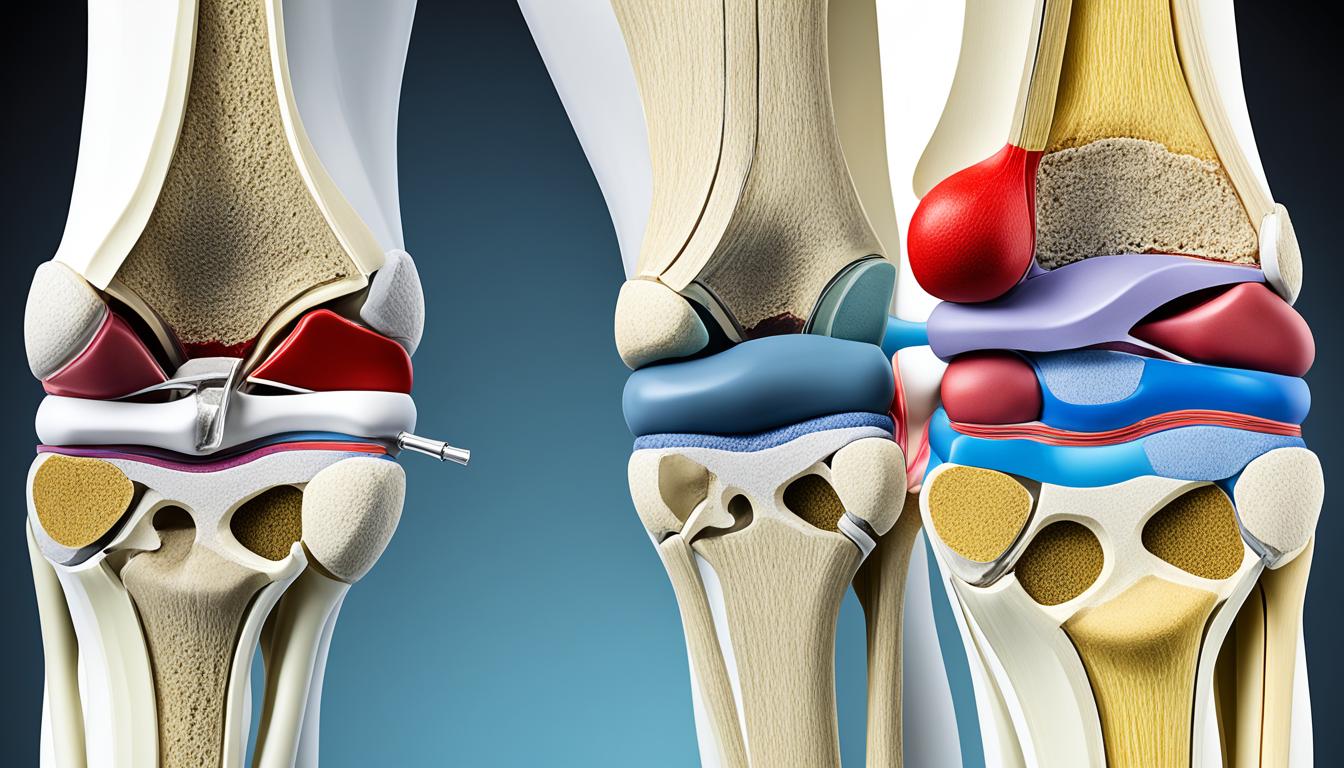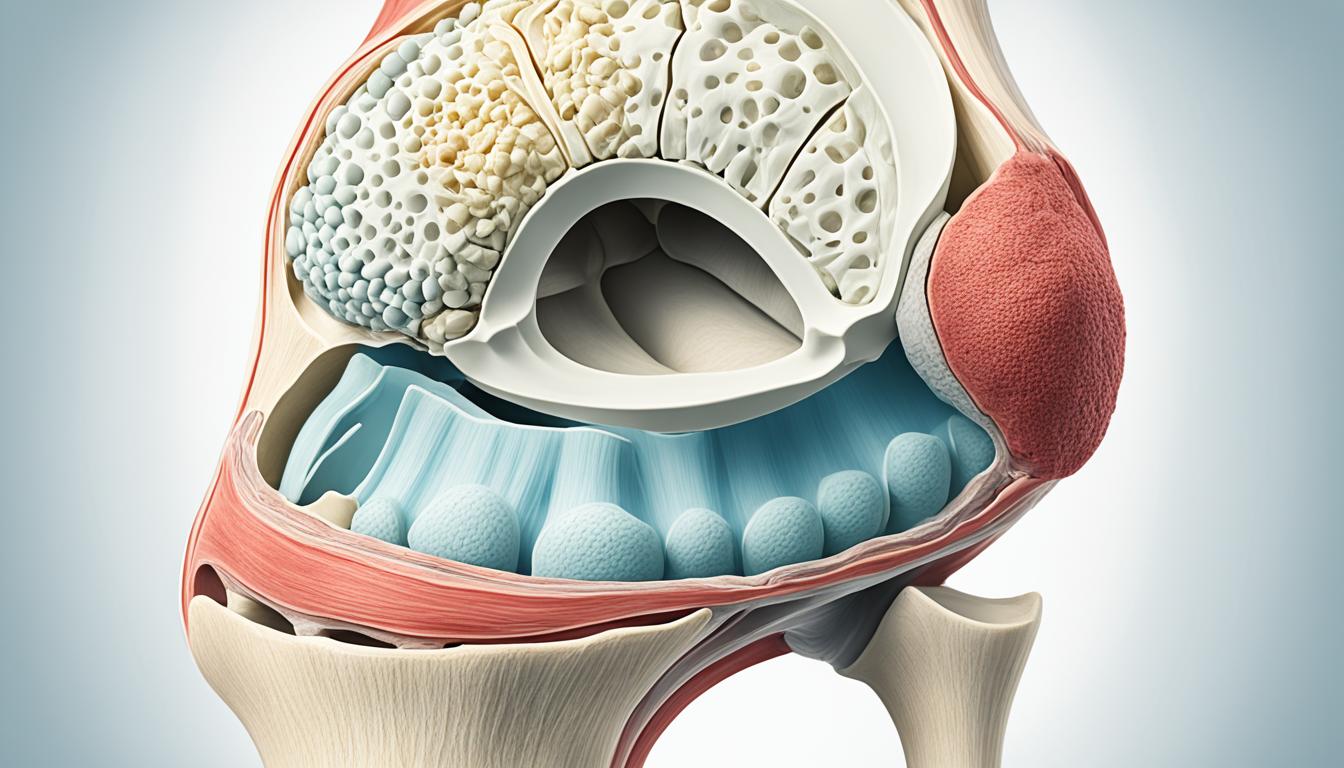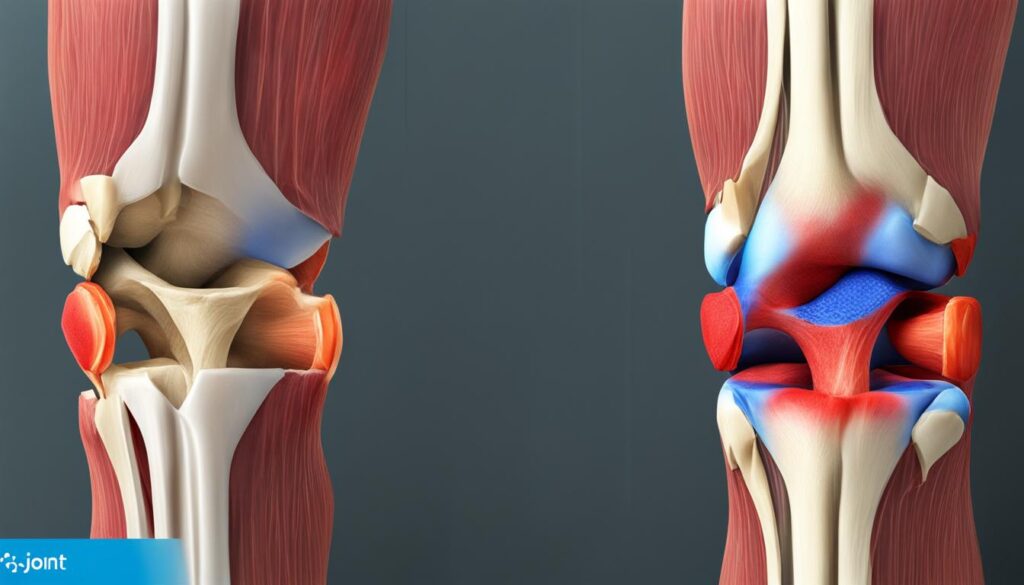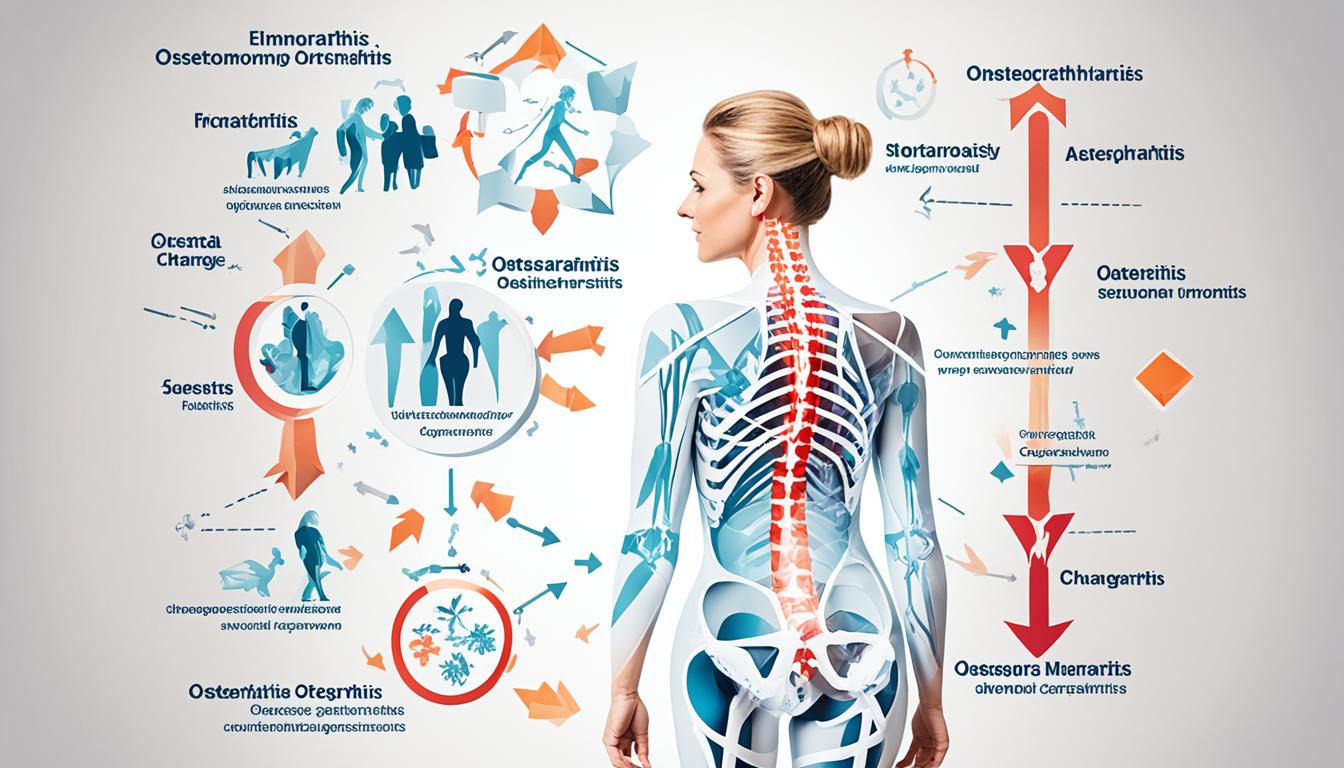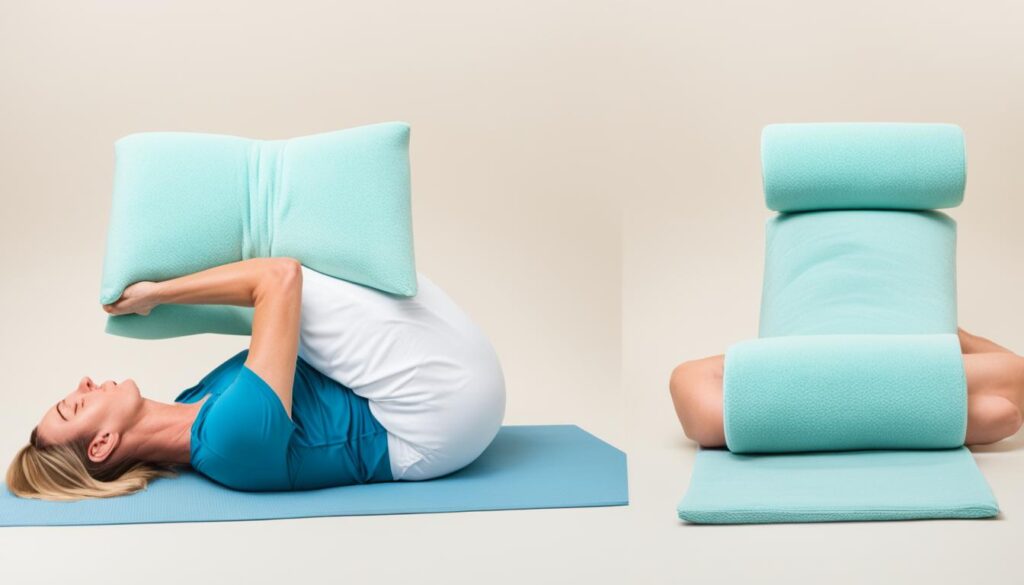Welcome to our informative article on knee osteoarthritis. In this section, we will delve into the reasons behind the development of this common condition. Osteoarthritis is a degenerative disease that primarily affects the cartilage in the knee joint, gradually wearing it down over time. While the exact cause of knee osteoarthritis is not fully understood, several factors can increase the risk of its occurrence. By understanding these causes, we can better comprehend how to prevent and manage knee osteoarthritis.
Aging is one of the primary risk factors for knee osteoarthritis. As we grow older, the protective cartilage naturally starts to deteriorate, making the knee joint more susceptible to damage and inflammation. Additionally, certain genetic and bone deformity factors can contribute to the development of knee osteoarthritis.
Obesity is another significant risk factor. The excess weight puts increased stress on the knee joint, accelerating the breakdown of the cartilage. Research has shown that obesity is directly linked to a higher incidence of knee osteoarthritis.
Joint injuries and repetitive stress on the knee joint can also increase the risk of osteoarthritis. Athletes or individuals involved in activities that involve frequent bending, twisting, or impact on the knees are particularly prone to developing knee osteoarthritis.
Certain metabolic diseases, such as diabetes and gout, can further contribute to the development of knee osteoarthritis. These conditions disrupt normal metabolic processes in the body, leading to inflammation and cartilage damage.
By understanding the causes of knee osteoarthritis, we can take proactive measures to reduce the risk and seek appropriate treatment options. In the upcoming sections, we will explore the symptoms, diagnosis, treatment, prevention, and management strategies for knee osteoarthritis. Stay with us to gain a comprehensive understanding of this condition and learn how to effectively manage it.
Symptoms of Knee Osteoarthritis
Symptoms of knee osteoarthritis often develop slowly and worsen over time. Common symptoms include:
- Pain in the affected joint*, especially during or after movement
- Stiffness in the joint
- Tenderness when pressure is applied
- Loss of flexibility
- A grating sensation or popping sound when using the joint
- The formation of bone spurs
- Swelling caused by inflammation
These symptoms can vary in severity and may impact mobility and daily activities.

| Symptom | Description |
|---|---|
| Pain | Pain in the affected joint, especially during or after movement. |
| Stiffness | Stiffness in the joint, making it difficult to move or bend. |
| Tenderness | Tenderness when pressure is applied to the joint. |
| Loss of flexibility | Reduced range of motion and flexibility in the joint. |
| Grating sensation or popping sound | A grating sensation or popping sound when using the joint. |
| Bone spurs | The formation of bone spurs around the affected joint. |
| Swelling | Swelling caused by inflammation in the joint. |
Source: Our research and expertise in knee osteoarthritis symptoms.
Diagnosis and Treatment of Knee Osteoarthritis
To effectively manage knee osteoarthritis, it is crucial to first obtain an accurate diagnosis. A medical professional will conduct a comprehensive physical examination, focusing on the affected knee joint. In addition, imaging tests such as X-rays can provide valuable insights into the condition of the cartilage and the presence of bone spurs.
Other diagnostic tests, including blood tests and joint fluid analysis, may be necessary to rule out other forms of arthritis and confirm knee osteoarthritis as the underlying cause of symptoms. These tests help to ensure that the treatment plan is specifically tailored to the individual’s needs and condition.
Treatment Options for Knee Osteoarthritis
While knee osteoarthritis cannot be cured, there are a variety of treatment options available to manage symptoms and improve overall quality of life. It is important to note that treatment approaches may vary depending on the severity of the condition and individual patient factors.
Non-drug treatments play a significant role in the management of knee osteoarthritis. These include:
- Applying ice or heat to the affected joint to alleviate pain and reduce inflammation.
- Weight management to minimize stress on the knee joint.
- Engaging in low-impact exercises, such as swimming or cycling, to maintain joint flexibility and strengthen surrounding muscles.
- Physical therapy to improve joint function and range of motion.
- Utilizing assistive devices like canes or braces to provide support and reduce pressure on the joint.
Medications can also be prescribed to manage the symptoms of knee osteoarthritis. Pain relievers, both over-the-counter and prescription, can help alleviate discomfort. Topical creams or ointments containing analgesic or anti-inflammatory ingredients may also be recommended.
In some cases, injections of corticosteroids or hyaluronic acid may be administered directly into the joint to provide temporary pain relief and improve mobility.
For individuals with severe knee osteoarthritis that significantly impairs their daily functioning, surgical interventions may be considered. These can include arthroscopy, which involves removing or repairing damaged cartilage, and knee replacement surgery, where the diseased joint is replaced with an artificial joint.
Remember, the most appropriate treatment plan for knee osteoarthritis will be determined by your healthcare provider after considering your specific condition and needs. It is essential to engage in open and honest communication with your doctor to ensure that you receive the most effective treatment options.

Treatment Options Summary:
| Treatment Option | Description |
|---|---|
| Non-drug treatments | Includes ice/heat therapy, weight management, low-impact exercises, physical therapy, and assistive devices. |
| Medications | Pain relievers, topical creams, and injections may be prescribed to manage symptoms. |
| Surgical interventions | Arthroscopy or knee replacement surgery may be considered in severe cases. |
Preventing and Managing Knee Osteoarthritis
While it is not always possible to prevent knee osteoarthritis, there are steps that can be taken to reduce the risk and manage the condition. Maintaining a healthy weight is important as excess weight can put stress on the knee joints. Engaging in regular exercise, including low-impact activities like swimming or biking, can help strengthen the muscles around the knee and improve joint stability. Protecting the knee joints from injuries and avoiding repetitive stress can also help prevent the development or progression of knee osteoarthritis. Additionally, following a comprehensive management plan that includes a combination of non-drug treatments, medication, and lifestyle modifications can help individuals effectively manage their symptoms and improve their overall quality of life.
Prevention Tips for Knee Osteoarthritis:
- Maintain a healthy weight to reduce stress on the knee joints.
- Engage in regular exercise, focusing on low-impact activities like swimming or biking.
- Protect the knee joints from injuries by wearing appropriate protective gear during physical activities.
- Avoid repetitive stress on the knee joints, taking breaks and using proper form during activities that involve kneeling, squatting, or lifting heavy objects.
Management Strategies for Knee Osteoarthritis:
- Frequently apply ice or heat to the affected knee joint to reduce pain and inflammation.
- Participate in physical therapy to strengthen the muscles around the knee and improve joint stability.
- Use assistive devices, such as knee braces or canes, to alleviate pressure on the knee joints during daily activities.
- Take over-the-counter pain relievers or use topical creams to temporarily relieve pain and discomfort.
- In severe cases, consult with a healthcare professional regarding medications or surgical interventions to manage pain and improve mobility.
“By implementing preventive measures and adopting effective management strategies, individuals can take control of their knee osteoarthritis and enhance their overall well-being.”
Comparison of Prevention and Management Strategies for Knee Osteoarthritis
| Prevention Strategies | Management Strategies |
|---|---|
| Maintain a healthy weight | Frequently apply ice or heat |
| Engage in regular low-impact exercise | Participate in physical therapy |
| Protect the knee joints from injuries | Use assistive devices |
| Avoid repetitive stress on the knee joints | Take over-the-counter pain relievers or use topical creams |
Conclusion
Knee osteoarthritis is a prevalent condition that affects many individuals and has a significant impact on their mobility and overall well-being. While the exact cause of knee osteoarthritis is not fully understood, there are several risk factors that can contribute to its development.
However, there is hope for relief from the symptoms of knee osteoarthritis. By seeking proper diagnosis, treatment, and implementing effective management strategies, individuals can significantly improve their quality of life. It is crucial to work closely with healthcare providers to develop a personalized plan that addresses specific needs and goals.
With a comprehensive approach that includes understanding the reasons behind knee osteoarthritis and implementing appropriate strategies, individuals can regain control of their condition. This can enable them to lead active and fulfilling lives, minimizing the impact of knee osteoarthritis and finding lasting relief.
FAQ
What is osteoarthritis of the knee?
Osteoarthritis of the knee is the most common form of arthritis and occurs when the protective cartilage in the knee wears down over time.
What are the causes of knee osteoarthritis?
The exact cause of knee osteoarthritis is not fully understood, but it can be influenced by factors such as age, sex, obesity, joint injuries, repetitive stress on the joint, genetics, bone deformities, and certain metabolic diseases.
What are the symptoms of knee osteoarthritis?
Common symptoms of knee osteoarthritis include pain in the affected joint, stiffness, tenderness, loss of flexibility, a grating sensation or popping sound in the joint, bone spurs, and swelling caused by inflammation.
How is knee osteoarthritis diagnosed and treated?
Diagnosis of knee osteoarthritis typically involves a physical examination and X-rays to assess the condition of the cartilage and look for bone spurs. Treatment options include non-drug treatments like applying ice or heat, weight management, low-impact exercises, physical therapy, and assistive devices. Medications and surgical treatments may also be prescribed in severe cases.
Can knee osteoarthritis be prevented or managed?
While it may not be possible to prevent knee osteoarthritis entirely, steps can be taken to reduce the risk and manage the condition. Maintaining a healthy weight, engaging in regular exercise, protecting the knee joints from injuries, and following a comprehensive management plan can help individuals effectively manage their symptoms and improve their overall quality of life.
How can knee osteoarthritis be relieved?
Knee osteoarthritis relief can be achieved through various treatment options, including non-drug treatments, medication, and lifestyle modifications. By working closely with healthcare providers and implementing appropriate strategies, individuals can find relief from their symptoms and lead active and fulfilling lives.
